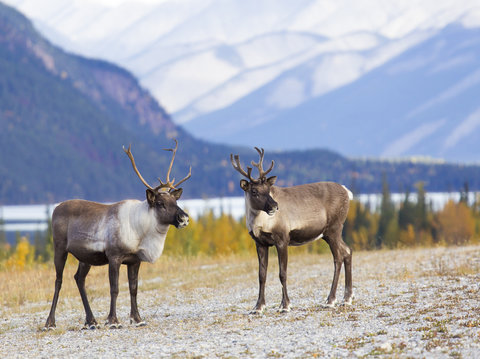
Varying responses
In polar regions, where global warming impacts are most extreme, years with earlier snowmelt can be a boon for Arctic wolf spiders. An earlier spring kick-starts the growing season. Given the extra time to mature, both sexes grow larger, with females increasing in size even more than males, improving their odds of getting and staying pregnant and their ability to nourish their offspring. For female caribou, on the other hand, which bulk up in the spring to care for their young, accelerated snow melt forces them to migrate north as springtime warms the pole. Their search for greening vegetation is often rewarded by nutritious food, but the journey exposes them to predators like wolves that roam the higher latitudes.
In the Southern Hemisphere, hotter sands in Australia threaten the survival of six sea turtle species that nest on the beaches. The environment determines a sea turtle’s sex. For the loggerhead species, if the sand incubates the eggs at around 29 degrees Celsius (84 degrees Fahrenheit), hatchlings will be female. Below that temperature, males hatch.
“In order for sea turtle populations to survive into the future, they need to have an appropriate ratio of males to females,” said co-author Larry Crowder, a marine ecologist and professor of oceans. “If we overlook the different vulnerabilities of each sex to rising global temperatures, we risk losing thirty years of conservation efforts within one generation of sea turtles.”
